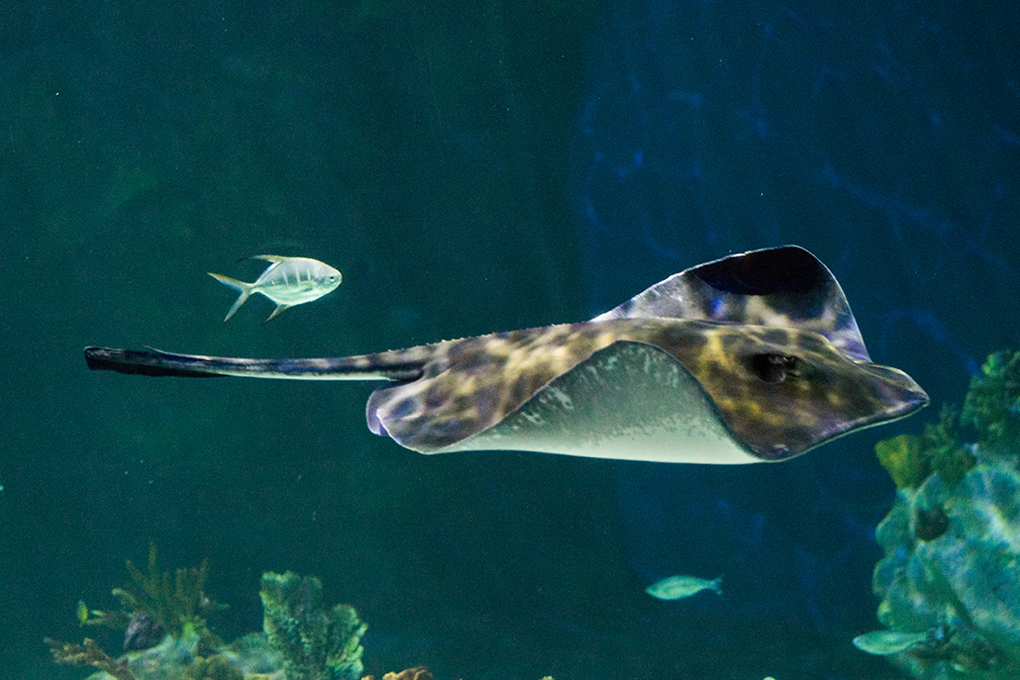Hypanus americanus
Fast Facts
- Southern stingrays visit ‘cleaning stations’ where Bluehead wrasses and Spanish hogfish eat parasites and mucus from the stingrays’ bodies.
- They can crush hard shells with their flat teeth.
- If threatened or stepped on, a ray raises its tail overhead, scorpion style, and drives its spine into the intruder. For humans, the pain is intense, and the jagged wound takes time to heal.
- Hammerhead sharks use their specially designed heads to prey upon stingrays.


Range
Southern Atlantic Ocean, the Caribbean, and Gulf of Mexico

Habitat
Benthic, sand and sea grass; deep and shallow waters with sandy bottoms

Size
Up to six feet wide (females), and 2.5 feet (males)

Nutrition
Bivalves, worms, small fish, and crustaceans
Characteristics
Southern stingrays have large, flat, diamond-shaped disks without distinct heads. Their dark brown or dark grey upper bodies and cream or whitish underbellies are ideal camouflage for animals that spend their days buried in sand. From above, only their eyes and huge spiracles are visible. Water enters the spiracles and leaves through the gill openings on the underside. Stingrays flap their pectoral fins, which some refer to as ‘wings’ for forward movement. A long, serrated spine is located at the base of their slender tail. The spine is poisonous and used for defense.
Behavior
Stingray mouths are on the ventral side (underside) of the body, so they feed on things that they find in the sand. They feed most commonly at night. Stingrays utilize electroreception, smell, and touch to locate prey hiding buried in the sand. In passive electroreception, the animal senses the weak bioelectric fields generated by other animals. Their stubby teeth are plate-like and are strong enough to crush hard shells. The Southern stingray may live between 15-25 years in the wild.
Reproduction
Southern stingrays can have between five to eight pups per litter, with the number of pups being directly related to maternal size. The gestation period ranges from 135-226 days and can involve approximately two cycles per year. Sometimes female stingrays mate with multiple males.

